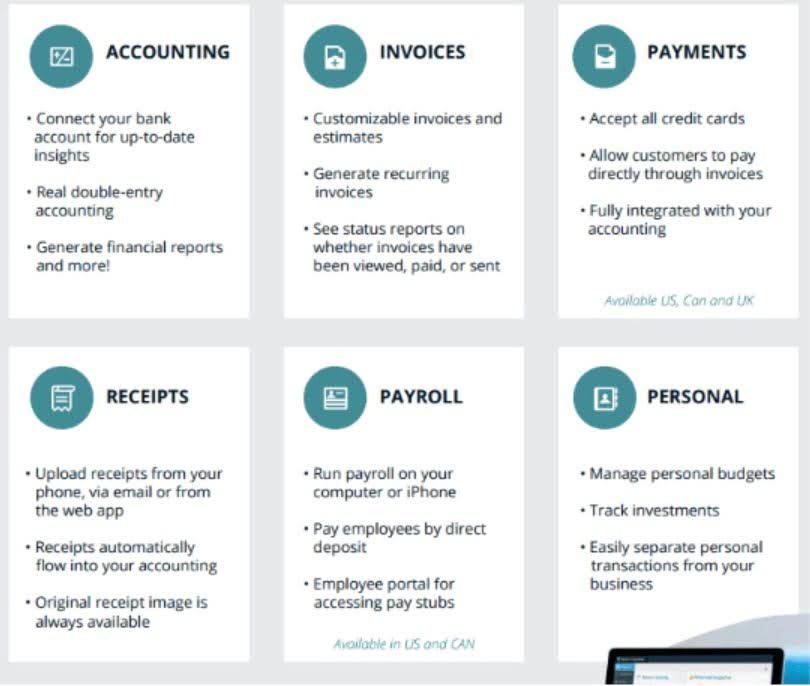Content
- IAS 37 Provisions, Contingent Liabilities and Contingent Assets
- Link your accounts
- Where is a contingent liability recorded?
- Incorporating Contingent Liabilities in a Financial Model
- Contingent Liabilities in Balance Sheet
- FAQs on Contingent Assets and Liabilities
- Examples of liabilities
- GAAP Compliance

Therefore, such circumstances or situations must be disclosed in a company’s financial statements, per the full disclosure principle. A contingent liability is dependent on the outcome of an uncertain future event. A contingent liability is recorded in the records of accounting if the contingency is estimated in probability.
- If both conditions do not exist, the contingent liabilities must record in the financial note.
- Possible contingent liabilities include loss from damage to property or employees; most companies carry many types of insurance, so these liabilities are normally expressed in terms of insurance costs.
- It is unclear if a customer will need to use a warranty, and when, but this is a possibility for each product or service sold that includes a warranty.
- Instead, only disclose the existence of the contingent liability, unless the possibility of payment is remote.
- There are sometimes significant risks that are simply not in the liability section of the balance sheet.
- The accrual account permits the firm to immediately post an expense without the need for an immediate cash payment.
Another fantastic example of contingent liability would be product warranties. Let’s say a mobile phone manufacturer produces many mobiles and sells them with a brand warranty of 1 year. However, if there is more than a 50% chance of winning the case, according to the prudence principle, no benefits would be recorded on the books of accounts. The principle of materiality states that all items with some monetary value must be accounted into the books of accounts. Items can be considered to have a monetary value if their inclusion or exclusion has an impact on the business. A contingent liability can be very challenging to articulate in monetary terms.
IAS 37 Provisions, Contingent Liabilities and Contingent Assets
Also, sales for 2020, 2021, 2022, and all subsequent years will need to reflect the same types of journal entries for their sales. In essence, as long as Sierra Sports sells the goals or other equipment and provides a warranty, it will need to account for the warranty expenses in a manner similar to the one we demonstrated. The company can make contingent liability journal entry by debiting the expense account and crediting the contingent liability account. A contingent liability is not recognised in the statement of financial position. Contingent liabilities also include obligations that are not recognised because their amount cannot be measured reliably or because settlement is not probable.
- Assume that Sierra Sports is sued by one of the customers who purchased the faulty soccer goals.
- Contingent liabilities, although not yet realized, are recorded as journal entries.
- A contingent liability has to be recorded if the contingency is likely and the amount of the liability can be reasonably estimated.
- The liability may be disclosed in a footnote on the financial statements unless both conditions are not met.
- On the other hand, if a loss becomes probable and can be reasonably estimated, your company would report a contingent liability on the balance sheet and a loss on the income statement.
- Past experience for the goals that the company has sold is that 5% of them will need to be repaired under their three-year warranty program, and the cost of the average repair is $200.
Contingent liabilities are recorded on the P&L statement and the balance sheet if the probability of occurrence is more than 50%. Possible contingency is not recorded in the books of accounts because it is very difficult to articulate the liability in monetary terms due to its limited occurrence. When the probability of such an event is extremely low, it is allowed to omit the entry in the books of accounts, and disclosure is also not required. It can be recorded only if estimation is possible; otherwise, disclosure is necessary. A warranty is another common contingent liability because the number of products returned under a warranty is unknown. Assume, for example, that a bike manufacturer offers a three-year warranty on bicycle seats, which cost $50 each.
Link your accounts
As a general guideline, the impact of contingent liabilities on cash flow should be incorporated in a financial model if the probability of the contingent liability turning into an actual liability is greater than 50%. In some cases, an analyst might show two scenarios in a financial model, one which incorporates the cash flow impact of contingent liabilities and another which does not. Both GAAP (Generally Accepted Accounting Principles) and IFRS (International Financial Reporting Standards) require companies to record contingent liabilities, due to their connection with three important accounting principles. A contingent liability is recorded as an ‘expense’ in the Profit & Loss Account and then on the liabilities side of the financial statement, that is the Balance sheet. If you use accrual based accounting, you should include these expenses in your financial records.
No one likes debt, but it’s an unavoidable part of running a small business. Accountants call the debts you record in your books “liabilities,” and knowing how to find and record them is an important part of bookkeeping and accounting. Estimated liabilities are the expenses that are owed because how to record a contingent liability the goods or services have been used/delivered. Invoices from the suppliers have not yet been received, so the exact amount is unknown at this time. To avoid giving the impression that there is no liability or that no expense has been incurred, the company must estimate the amount.
Where is a contingent liability recorded?
Hence, a that future intent liability is recorded in the balance sheet as a form of a footnote. Prudence is an important accounting concept that ensures income and assets are not overstated while expenses and liabilities are not understated. Since the result of contingent liabilities cannot be predicted with certainty, the probability of the contingent event occurring is calculated, and if it is more than 50%, an expense and a corresponding liability are recorded. The recording of the contingent liabilities in the financial books prevents liabilities and expenses from being understated. For example, a company might be involved in a legal dispute that could result in the payment of a settlement based on a verdict reached in a court. However, at the time of the company’s financial statements, whether there will be a settlement liability and the date and amount of any settlement have yet to be determined.
- The contingent liability may turn into actual liability which will harm the company’s ability to repay its debt.
- If your assets don’t equal your liabilities and equity, the two sides of your balance sheet won’t ‘balance,’ the accounting equation won’t work, and it probably means you’ve made a mistake somewhere in your accounting.
- In this case, a note disclosure is required in financial statements, but a journal entry and financial recognition should not occur until a reasonable estimate is possible.
- An example of determining a warranty liability based on a percentage of sales follows.
- The higher it is, the more leveraged it is, and the more liability risk it has.
It is unclear if a customer will need to use a warranty, and when, but this is a possibility for each product or service sold that includes a warranty. The same idea applies to insurance claims (car, life, and fire, for example), and bankruptcy. There is an uncertainty that a claim https://www.bookstime.com/articles/how-to-make-a-balance-sheet will transpire, or bankruptcy will occur. If the contingencies do occur, it may still be uncertain when they will come to fruition, or the financial implications. Pending litigation involves legal claims against the business that may be resolved at a future point in time.
Another popular calculation that potential investors or lenders might perform while figuring out the health of your business is the debt to capital ratio. Generally speaking, the lower the debt ratio for your business, the less leveraged it is and the more capable it is of paying off its debts. The higher it is, the more leveraged it is, and the more liability risk it has. Contingent assets are the possible future assets which the company may or may not be able to take advantage of, it depends on any specific event that is not under company control.
- The company can make contingent liability journal entry by debiting the expense account and crediting the contingent liability account.
- Instead, the contingent liability will be disclosed in the notes to the financial statements.
- For a financial figure to be reasonably estimated, it could be based on past experience or industry standards (see (Figure)).
- It mostly happens when the assets’ future economic benefits are not measured reliably.
- The principle of prudence is a crucial principle that states that a company must not record future anticipated gains into the books of accounts, but any expected losses must be accounted for.
A contingent liability adversely impacts the company’s assets and net profitability and thus has the potential to harm a company’s financial health and performance. So, according to the Full Disclosure Principle, such situations and events must be disclosed in a company’s financial statements. While a contingency may be positive or negative, we only focus on outcomes that may produce a liability for the company (negative outcome), since these might lead to adjustments in the financial statements in certain cases. Positive contingencies do not require or allow the same types of adjustments to the company’s financial statements as do negative contingencies, since accounting standards do not permit positive contingencies to be recorded. Assume that a company is facing a lawsuit from a rival firm for patent infringement.
The full disclosure principle states that all necessary information that poses an impact on the financial strength of the company must be registered in the public filings. Lawsuits, especially with huge companies, can be an enormous liability and significantly impact the bottom line. Companies that underestimate the impact of legal fees or fines will be non-compliant with GAAP. Contingent liabilities are liabilities that may occur if a future event happens. Sophisticated analyses include techniques like options pricing methodology, expected loss estimation, and risk simulations of the impacts of changed macroeconomic conditions.







